
Jane Espenson Quote “Never attribute to malice what can be explained by Think
Hanlon's razor can be described as "never attribute to malice that which is adequately explained by carelessness." It is an excellent thing to keep in mind when someone says or does something that upsets/offends/angers you and you might be quick to think that it was done with a desire to hurt you because of the person's ill will.

Harold S. Kushner Quote “Never attribute to malice or other deliberate decision what can be
Abstract. "Never attribute to malice that which is adequately explained by stupidity"—so says Hanlon's Razor. This principle is designed to curb the human tendency toward explaining other people's behavior by moralizing it. We ask whether Hanlon's Razor is good or bad advice. After offering a nuanced interpretation of the principle.
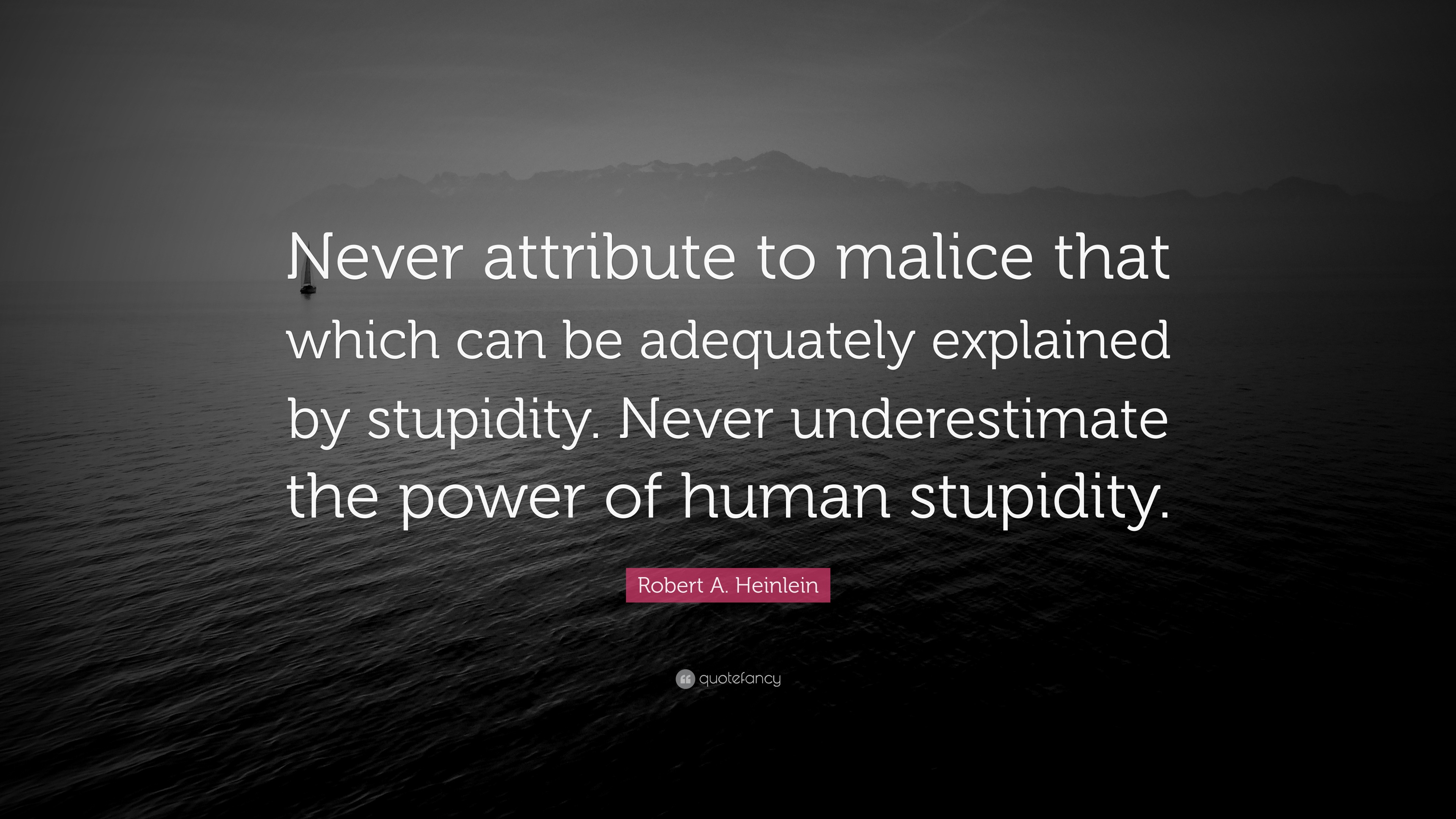
Robert A. Heinlein Quote “Never attribute to malice that which can be adequately explained by
The adage "Never attribute to malice that which is adequately explained by stupidity." 1980 October, G. Gordon Liddy, quotee, "Playboy Interview: G. Gordon Liddy", in Playboy[1], volume 27, number 10, Chicago, →ISSN, page 211: McCord may have bungled the taping of the internal doors, all right, but remember Hanlon's Razor, which is a maxim that.

Robert A. Heinlein Quote “Never attribute to malice that which can be adequately explained by
Consider, for instance, Hanlon's Razor-the idea that one should "never attribute to malice what can easily be attributed to stupidity.". Meaning that most of the bad things people do are not done out of evil…but simple incompetence. Not everyone is as well-educated as you, not everyone was raised to be responsible like you were, not.

Jane Espenson Quote “Never attribute to malice what can be explained by Think
Hanlon's Razor is an adage that says, "Never attribute to malice that which can be adequately explained by stupidity.". Although somewhat harsh in this context (after all, everyone makes mistakes), it does capture the essence of what happened during the water supply incident. After the event occurred, the immediate belief was that there.

Napoleon Quote “Never ascribe to malice that which can adequately be explained by
Nevertheless, Shermer suggests keeping in mind what he calls a conspiracism principle: Never attribute to malice what can be explained by randomness or incompetence. Furthermore, even many real.

Never attribute to malice that which can be adequately explained by stupidity. True Happiness
Variations occur, but the most often repeated version is, "Never attribute to malice that which can be adequately explained by stupidity." The real value of Hanlon's Razor lies in the first part:.

Napoleon Quote “Never ascribe to malice that which can adequately be explained by
You might have guessed it by now, but some obvious examples are -. When a co-worker is actually trying to mess with you. When a politician is shirking responsibilities. When partner or a friend is taking advantage of you. In these situations, you apply Hanlon's razor the first couple of times, but soon you build an intuition for knowing.
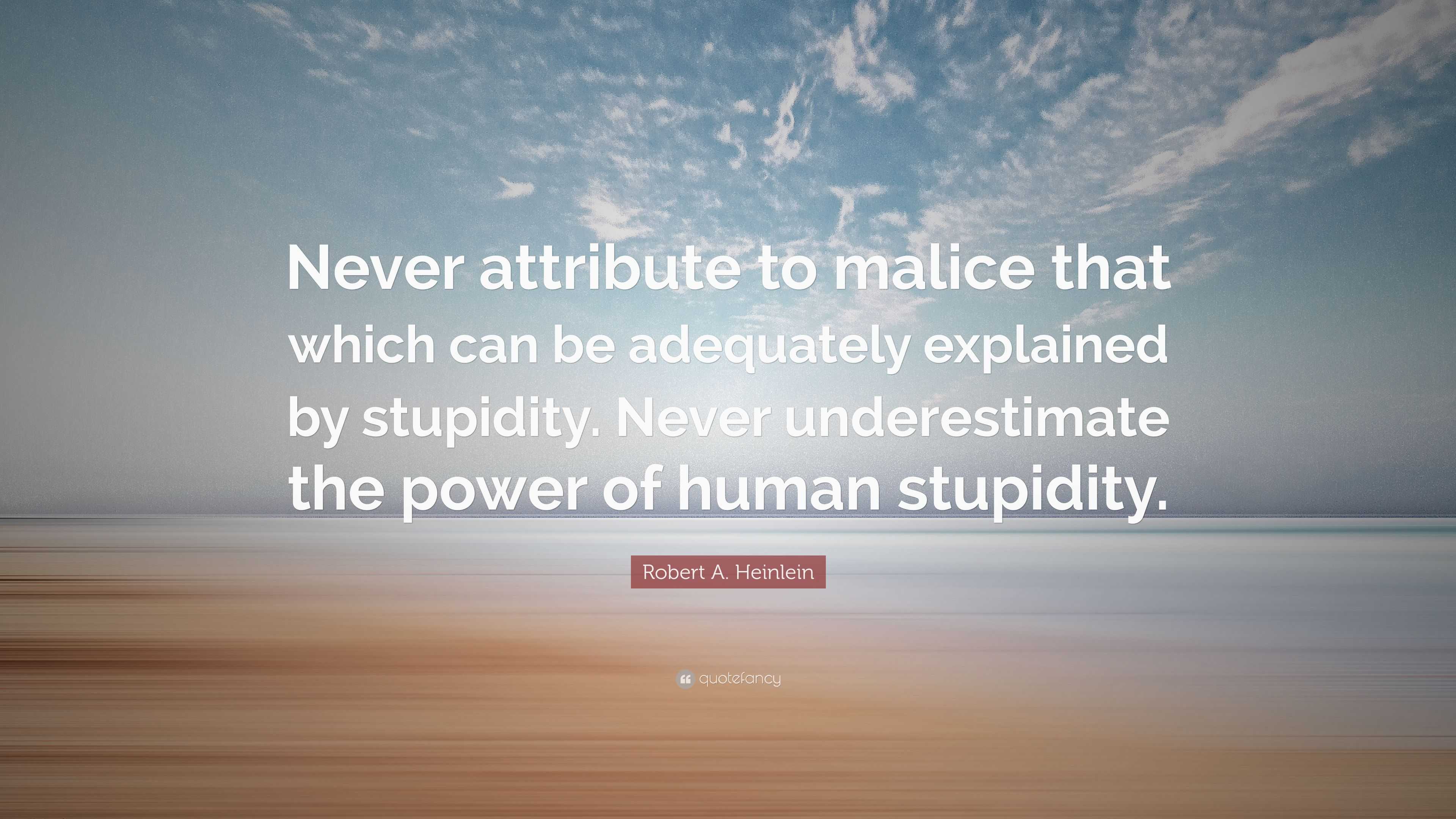
Robert A. Heinlein Quote “Never attribute to malice that which can be adequately explained by
Hanlon's Razor is typically expressed as: "Never attribute to malice that which can be adequately explained by stupidity," or sometimes "Don't assume bad intentions over neglect or incompetence.".

"Never ascribe to malice that which can be adequately be explained by Napoleon
Hanlon's razor is the adage that you should "never attribute to malice that which is adequately explained by stupidity". Applied broadly, this principle suggests that when assessing people's actions, you should not assume that they acted out of a desire to cause harm, as long as there is a reasonable alternative explanation.
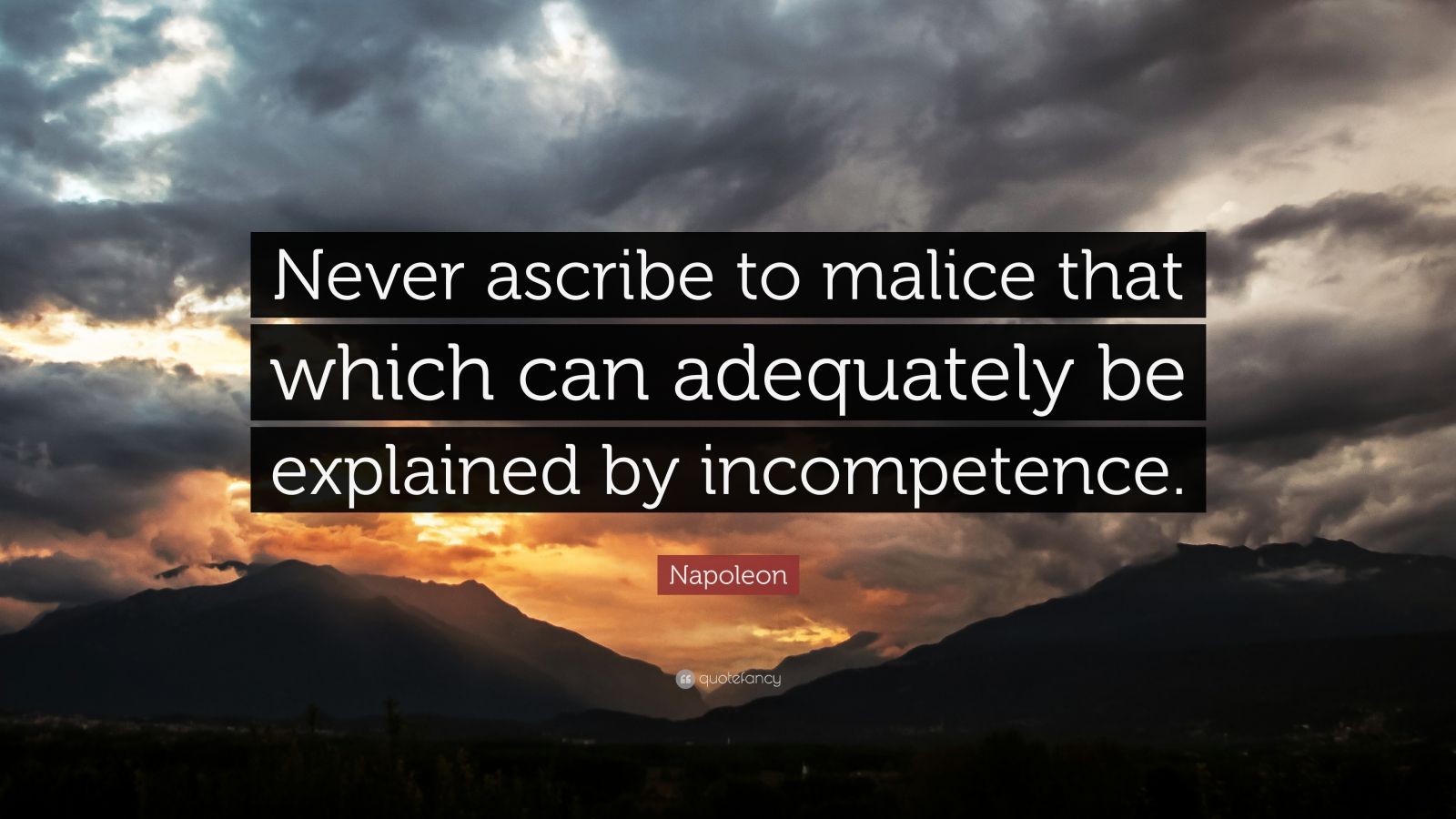
Napoleon Quote “Never ascribe to malice that which can adequately be explained by
"Never attribute to malice that which is adequately explained by stupidity." In other words, there is a tendency for individuals or businesses to assume malice when that malice is in fact stupidity. Table of Contents Understanding Hanlon's razor

Robert A. Heinlein Quote “Never attribute to malice that which can be adequately explained by
"Never attribute to malice that which is adequately explained by stupidity ." In simpler words: some bad things happen not because of people having bad intentions, but because they did not think it through properly. The quotation is attributed to Robert J. Hanlon of Scranton, Pennsylvania, US.
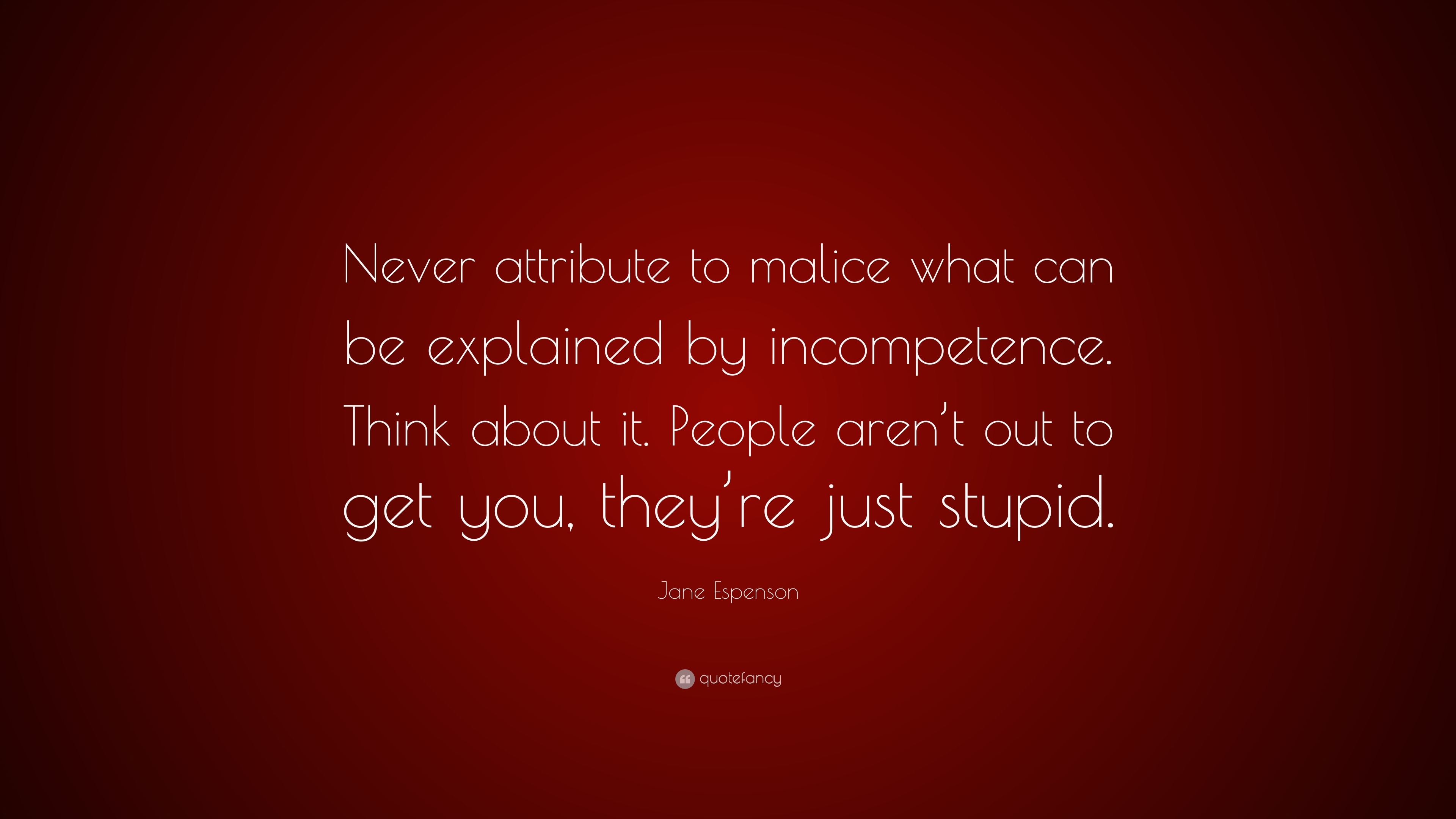
Jane Espenson Quote “Never attribute to malice what can be explained by Think
Never attribute to malice that which is adequately explained by stupidity.1 - Robert. J. Hanlon of Scranton, PA Key Terms Hanlon's Razor: As stated by Robert. J. Hanlon, a heuristic telling us to "never attribute to malice that which is adequately explained by stupidity."
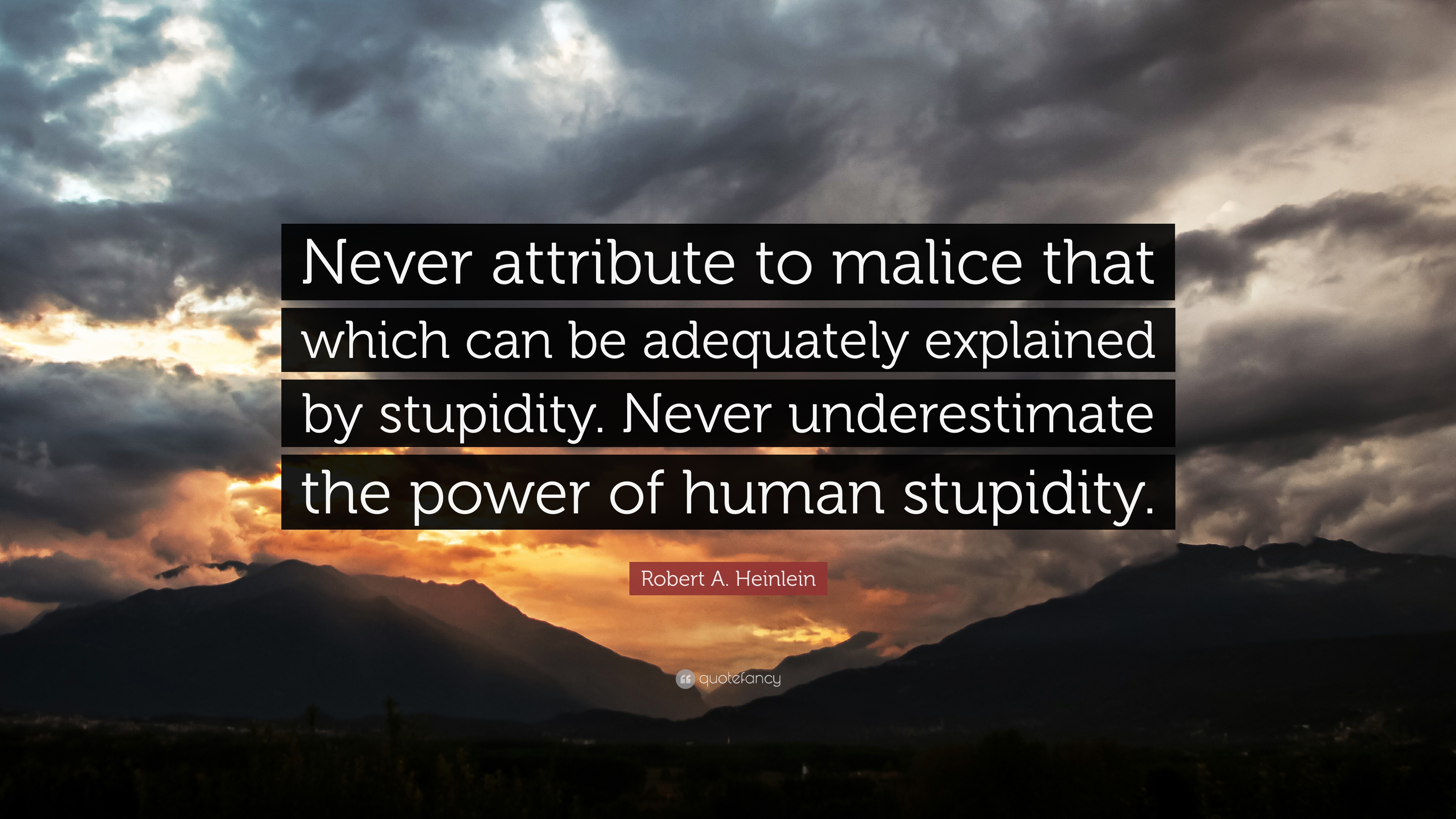
Robert A. Heinlein Quote “Never attribute to malice that which can be adequately explained by
Hanlon's Razor cautions us to "never attribute to malice that which is adequately explained by stupidity." However, the German theologist and philosopher Dietrich Bonhoeffer (1906-45), an ardent and vocal opponent of the National Socialist movement in Germany in the 1930s and '40s, believed that stupidity is more dangerous than malice:

Jane Espenson Quote “Never attribute to malice what can be explained by Think
"Never attribute to malice that which is adequately explained by stupidity"—so says Hanlon's Razor. This principle is designed to curb the human tendency toward explaining other people's behavior by moralizing it. We ask whether Hanlon's Razor is good or bad advice.

Napoleon Quote “Never ascribe to malice that which can adequately be explained by
Hanlon's razor is an adage or rule of thumb that states:. Never attribute to malice that which is adequately explained by stupidity. It is a philosophical razor that suggests a way of eliminating unlikely explanations for human behavior. It is probably named after Robert J. Hanlon, who submitted the statement to Murphy's Law Book Two (1980). Similar statements have been recorded since at least.